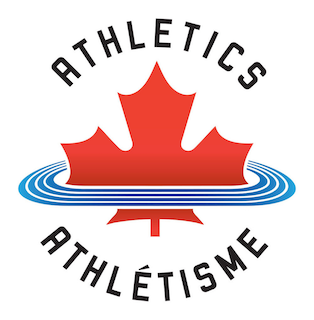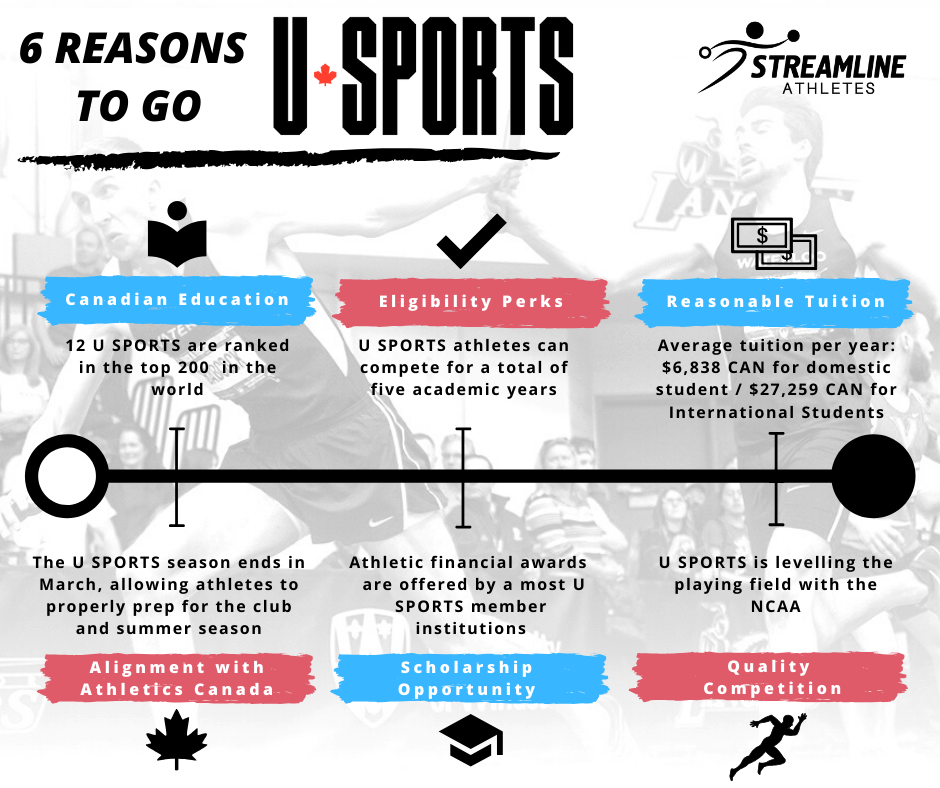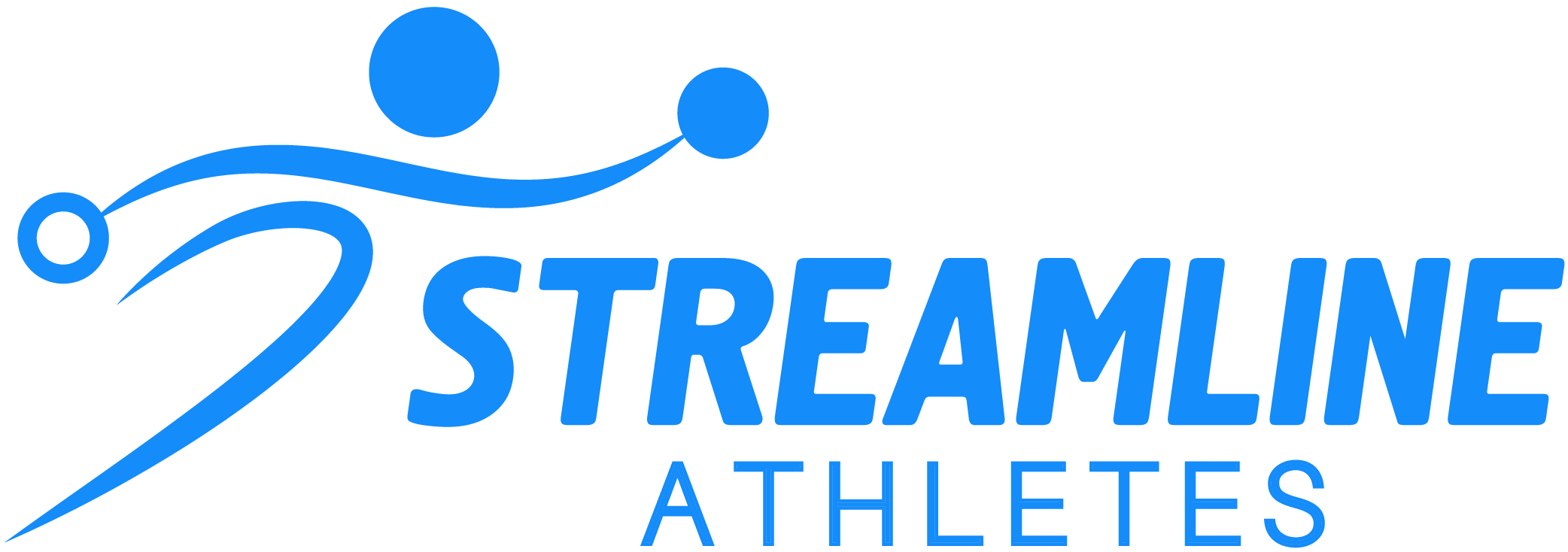Why you should consider attending a USPORTS school
There are more than 1200 universities and colleges with track and field or cross-country programs in North America. I think we can agree that’s an overwhelming number. From the NCAA’s three divisions, the NAIA, junior college opportunities within the NJCAA, and U SPORTS, there are so many things to consider and it can be difficult to know what options are right for you.
Read on for six reasons to check out what’s going on in Canada with U SPORTS.
If you’re looking for a way to compare these schools, click here
What is U SPORTS?
U SPORTS, formerly called CIS, is the national governing body of university sport in Canada. It is comprised of 56 universities divided into four conferences, all within one nation. U SPORTS is the national member of FISU (International University Sports Federation) and encompasses 12 sports total, 11 for women and 10 for men.
Why U SPORTS?
1. Reasonable tuition
According to Statistics Canada, the average undergraduate tuition for full-time students is CAN$6,838 (approx. US$5100) per academic year. The national average for international students is $27,259 CAN (approx. $20,346 US).
Compare estimated school-specific tuition costs →
For comparison’s sake, the US yearly tuition fees at four-year universities average CAN$13,704 (approx. US$10,230) for state residents and CAN$35,219 (approx. US$26,290) for everyone else (according to College Board).
Francophone student-athletes have another tuition opportunity to capitalize on. Because of agreements between the government of Quebec and the governments of Canada and France, and the French Community in Belgium, francophone students qualify for certain tuition fee exemptions.
- Non-Quebec resident Canadian students taking specified French courses in Quebec qualify for out-of-province fee exemptions and can study for the same price as Quebec residents
- French Nationals and francophone Belgian undergraduate students qualify for an international tuition exemption and can study for the same price as Canadian students
- French Nationals and francophone Belgian graduate students qualify for tuition at the Quebec rate and can study for the same price as Quebec residents.
2. Scholarship opportunity
Athletic financial awards (AFAs) are offered by a majority of the U SPORTS member institutions but the availability depends on each individual school.
- U SPORTS AFAs are capped at the cost of university tuition and compulsory fees
- A full U SPORTS scholarship covers the cost of tuition and fees
- Men’s and women’s track and field programs each have a maximum of 20.3 units of full AFAs to give out
- This is based on a benchmark of 70% of the 29 spots available on a track and field Championship Roster having a full U SPORTS scholarship
3. Developmental alignment with Athletics Canada

U SPORTS does not host an outdoor track and field season. This allows track and field student-athletes to focus on competing for their school team during indoor and then properly switch gears and get ready for a summer outdoor season.
U SPORTS recognizes both the importance of a summer season for athlete development and that university sport isn’t the end of the road for many athletes.
When the indoor season ends in March, U SPORTS student-athletes have the opportunity to take a needed break from university competition and put in a solid block of training before their summer season begins and chances to compete for their home clubs and countries begin to materialize.
For a student-athlete who competes all throughout the spring for their university’s NAIA or NCAA outdoor season, it’s a tall order to stay sharp and competition ready for FISU games or their country’s national championships.
4. Earning a Canadian education
Academically, Canada’s universities are among the best on the globe. Canada boasts 24 universities in the top 500 worldwide, including 12 U SPORTS schools in the top 200. I repeat, in the whole world!
1. University of Toronto - Varsity Blues (world academic ranking: 19)
2. University of British Columbia - Thunderbirds (world academic ranking: 28)
3. University of Alberta - Golden Bears & Pandas (world academic ranking: 56)
4. McGill University - Martlets & men’s team (world academic ranking: 58)
5. University of Waterloo - Warriors (world academic ranking: 92)
6. University of Calgary - Dinos (world academic ranking: 108)
7. McMaster University - Marauders (world academic ranking: 127)
8. Université de Montreal - Carabins (world academic ranking: 139)
9. York University - Lions (world academic ranking: 173)
10. University of Western Ontario - Mustangs (world academic ranking: 174)
11. University of Victoria - Vikes (world academic ranking: 192)
12. University of Ottawa - Gee-Gees (world academic ranking: 194)
Canadian degrees are regarded highly as a catalyst for a successful career and U SPORTS comprises a majority of degree-granting schools in Canada.
Did you know you can use Streamline Athletes to see world, North American, and national university rankings?
5. Eligibility perks
U SPORTS athletes can compete for a total of five academic years. That’s one full year longer than both the NAIA and the NCAA.
There is also no eligibility time limit in the U SPORTS association which means you can take a break in between competition years if that is something you need. As an example, you could compete for two years for a U SPORTS school, take a year off (or more if you need it) because of an injury or in order to study abroad, and go back to complete your final three competition years when you’re ready. In the NCAA DI and DII, for comparison, you get five years to complete four years of eligibility, beginning from your first full-time enrolment.
The (age) limit does not exist!*
Aligning with the lack of an eligibility clock, U SPORTS doesn’t put an age restriction on its competing track and field athletes.
While NCAA DI and DII don’t have any set age limits, both divisions require enrolment within one year of high school graduation.
*The sport of football is home to more stringent age rules than the rest of the association. You cannot be older than 24 years of age when entering your first season as a U SPORTS football student-athlete.
6. High-quality competition
It’s true that the NCAA has long been regarded as the highest level of collegiate competition. As U SPORTS develops, however, the playing field is levelling out. Don’t just take my word for it, check out Canadian Running Magazine’s comparisons from this year’s U SPORTS and NCAA indoor track and field seasons:
Women’s 1,000m
U Sports: Jenna Westaway — 2:37:04
NCAA: Danae Rivers — 2:38.58
Women’s 800m
U Sports: Jenna Westaway — 1:59.87
NCAA: Allie Wilson — 2:02.65
Women’s 300m
U Sports: Zoe Sherar — 37.79
NCAA: Tamara Clark — 37.01
Men’s 300m
U Sports: Austin Cole — 32.89
NCAA: Jacory Patterson — 32.49
Men’s 60m hurdles
U Sports: Pierce Lepage — 7.83
NCAA: Grant Holloway — 7.35

Which U SPORTS school is right for you?
Finding the right school for you is about accessing — and understanding — information about academic offerings, athletics (training, facilities, team), geography, and financial conditions at potential universities. It’s about prioritizing this information based on what’s important to you as an individual student-athlete. It’s about making an informed and confident decision.
With Streamline Athletes, you can browse and filter through U SPORTS universities based on what’s important to you. We’ve put all the academic, athletic, geographic, and financial info in one place, so all you have to do is sign in and make it yours.
Processing your application
There was an error sending the email, please try again

